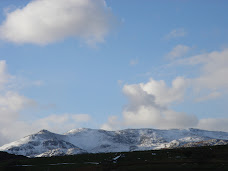Dear Laura and Cllr Roger
My subject heading, above is, for me, one example of one legitimate meaning of corruption.
If I may be so honest as to say so, there is this one big flaw in your argument:-
Money is no object for rail projects for London (£15 billion for Cross Rail east-west and now Cross Rail north-south in the planning at similar expense), two very expensive HS2 stations for Birmingham and tram extensions for Brum at over £100 million per mile, to end up replacing hybrid buses. In other words, business cases are quickly written to make the business cases watertight, unassailable and more secure than Fort Knox - as we have seen with the £50 billion HS2 line - and, the very low priority rail line to the middle of nowhere in rural,depopulated southern Scotland at £10 million per mile.
Business cases are dishonest because they are always made to come up with what the right wing political masters want! Like the cost benefit analysis that made the Kidderminster, Blakedown, Hagley motorway bypass essential to be built in the 1990s to bypass a mainly rural, dual carriageway and queues at traffic lights in Hagley (we stopped this wasteful idiocy). So much for it being essential!
Like the business case that made Metro One essential because it would get 15 million passenger journeys a year. It turned out to be five million every year or less and, been loss making every year ever since. In other words, it was built under false pretences - corruption in my book. So much for honest and accurate business cases.
In this age of supposed austerity (now in year six), you and Roger should be livid at the following weird and wonderful and very extravagant public expenditure schemes that go to London and Scotland, with crumbs from the rich man's table going to Birmingham and never the Black Country boroughs of Dudley, Sandwell and Walsall. This, in 34 years of fruitless endeavour that must have cost millions of pounds in salaries to the team of officers and, in generous expenses to the many PTA, ITA and the Transport Delivery Committee councillors. This is all the exact opposite of Gordon Brown's prudent economics for the poor taxpayer. It is what you get with right wing politicians out of control because there is no checks and balances from left wing politicians like me who never get elected - until, extraordinarily, one did on Saturday, 12 September!
For me, this is all corrupt economics and nothing like living with our means, limits and boundaries of steady state green economics.
In addition, passenger numbers on our urban rail network is increasing. The demand is clearly there for more rail lines in the rail and road congested Black Country. More capacity is urgent. It cannot wait until the 2040s before you work on getting diesel (or better, electric) trains on the Black Country Line.
How to build a railway:
This is how it is done at £10 million per mile - ten times cheaper than Metro in Brum city centre:
Example:
MOVING HEAVEN AND EARTH
Earthworks are often the first and most visible sign that the railway is being built. Firstly, surface layers – in this case cycle-path tarmac– are removed. The ground is then excavated down, or built up to the level where the railway line will lie. Embankments or retaining walls are built either side of the track, using earth sourced from other locations which is then stabilised or re-enforced. Some of the pre-existing embankments will also require improvement. Drainage also needs to be created, as well as installing pumps, laying pipes, building storage tanks and building culverts (drains) which allow rainwater to flow underneath, and away from, the railway.
WORK TO STRUCTURES
There are a number of structures along the route: 137 bridges, 42 newly constructed and 95 in need of refurbishment. A variety of work is required to existing bridges in order to help them comply with safety standards and make them suitable for the railway to run over or under. We may have to demolish and re-build some structures, including the creation of entirely new roads. However, where parts of a bridge can be re-used, we will keep these in situ to minimise construction works and we only ever replace what is failing or unsuitable.
LAYING THE RAILWAY
First we create a railway formation (the foundation on which the railway lies). This is flattened, ready for ballast to be laid on top. Ballast consists of layers of crushed stone which form the track bed and also help to drain the railway. We then level and stabilise this ballast using special machinery, before laying sleepers at precise intervals all the way along the route. Then the tracks are finally laid on top and fixed into place.
Electrification and electric trams seem to be beyond the UK's level of competence:
Now in the sixth decade of electrifying our rail network we are, still, nowhere near seeing an end to it. The Swiss did theirs in two decades before 1939. 34 years ago we went haring off into electric trams to replace mainly trains. Only 22 Km would have been achieved by the end of the year when we were assured that 200 Km would be up and running by they year 2000, fifteen years ago.
This summer, there was an inexplicable delay of three months when all work was stopped on two major English electrification schemes.
Are we competent in building HS2? Should TfL come to the West Midlands to advise us? Should we get a further opinion from the European rail industry who do know what they are doing?
Yours sincerely
















No comments:
Post a Comment